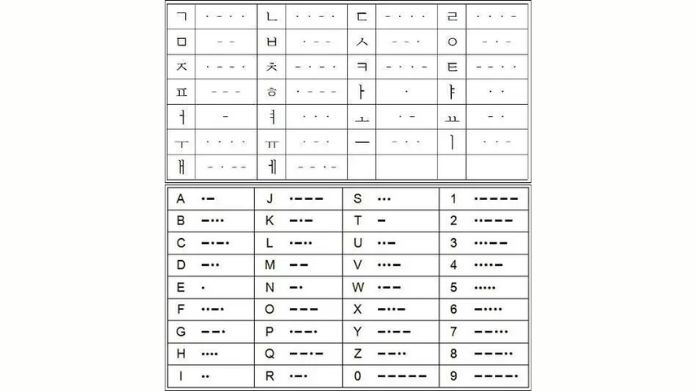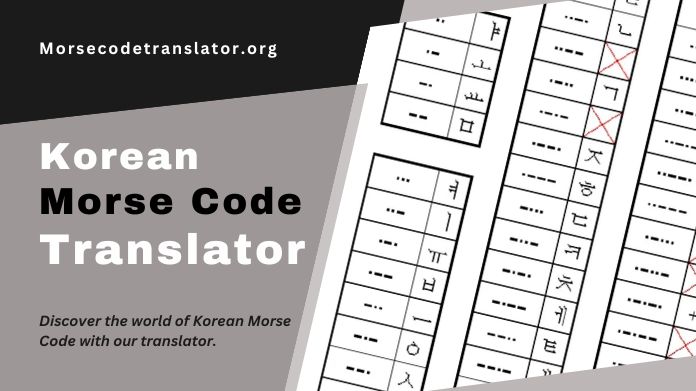Unlocking the intriguing realm of Morse code in the context of the Korean language, a Korean Morse Code translator serves as a gateway to linguistic encryption.
This Morse Code Translator seamlessly transforms Hangul characters into the rhythmic patterns of dots and dashes that define Morse code. In this concise guide, we explore the essence of a Korean Morse Code translator and unravel the simplicity behind its usage.
Discover how this online marvel effortlessly translates Korean text into Morse code and vice versa, offering a unique window into the intersection of language and coded communication.
Join us on a brief journey as we demystify the process, opening doors to the world of Morse code with a distinctly Korean twist.
What is a Korean Morse Code Translator?

A Korean Morse Code translator is an online tool or application designed to convert Korean text into Morse code and vice versa. Morse code encodes text characters using sequences of dots and dashes to represent letters, numbers, and punctuation. In the context of Korean Morse Code translation, this means converting Hangul characters into the corresponding Morse code symbols.
Morse code represents letters, numbers, and punctuation marks using a combination of short and long signals, commonly known as dots and dashes.
This translation process allows Korean speakers to communicate messages using Morse code, which can be transmitted through sound or light signals.
How to Use a Korean Morse Code Translator?

Using a Korean Morse Code translator is generally straightforward. Here’s a step-by-step guide on how to use it:
Step 1: Access a Korean Morse Code Translator:
Start by finding a reliable Korean Morse Code translator online. Some various websites and applications offer this service for free.
Step 2: Enter Korean Text:
Once you’re on the translator platform, you’ll typically find a text box where you can input your Korean text. Type or paste the text you want to convert into Morse code.
Step 3: Choose Direction:
Some translators allow you to choose the direction of translation—either from Korean to Morse code or vice versa. Select the desired direction based on whether you want to encode or decode the text.
Step 4: Click or Submit:
After entering the text and selecting the translation direction, there is usually a button like “Translate” or “Convert.” Click on this button to initiate the translation process.
Step 5: Interpret the Output:
The translator will generate the corresponding Morse code for the entered Korean text or vice versa. Interpret the output, consisting of dots (.) and dashes (-) representing the Hangul characters.
Step 6: Copy or Save:
Many translators allow you to copy the Morse code output to your clipboard. You can also save the translated result for future reference.
Tips for Using a Korean Morse Code Translator
1. Understand Morse Code Basics:
Familiarize yourself with the Morse code symbols for the Korean Hangul characters. This basic understanding will help you interpret the results more effectively.
2. Check for Accurate Translation:
Ensure that the translator you’re using is accurate and reliable. Some platforms may offer additional features or explanations about Morse code symbols.
3. Experiment with Short Texts:
When starting, experiment with shorter Korean texts to get a feel for the translator and Morse code conversion. As you become more comfortable, you can try longer sentences.
4. Explore Additional Features:
Some translators may offer additional features, such as sound playback of Morse code or the option to download the translated results. Explore these features to enhance your experience.
Conclusion
In conclusion, a Korean Morse Code translator is a valuable tool for encoding and decoding Korean text using the Morse code system.
Whether you’re curious about Morse code, studying Korean, or intrigued by linguistic coding, using a Korean Morse Code translator can be educational and entertaining.
Follow the steps outlined above to effectively use the translator and explore the fascinating world of Morse code in the context of the Korean language.
